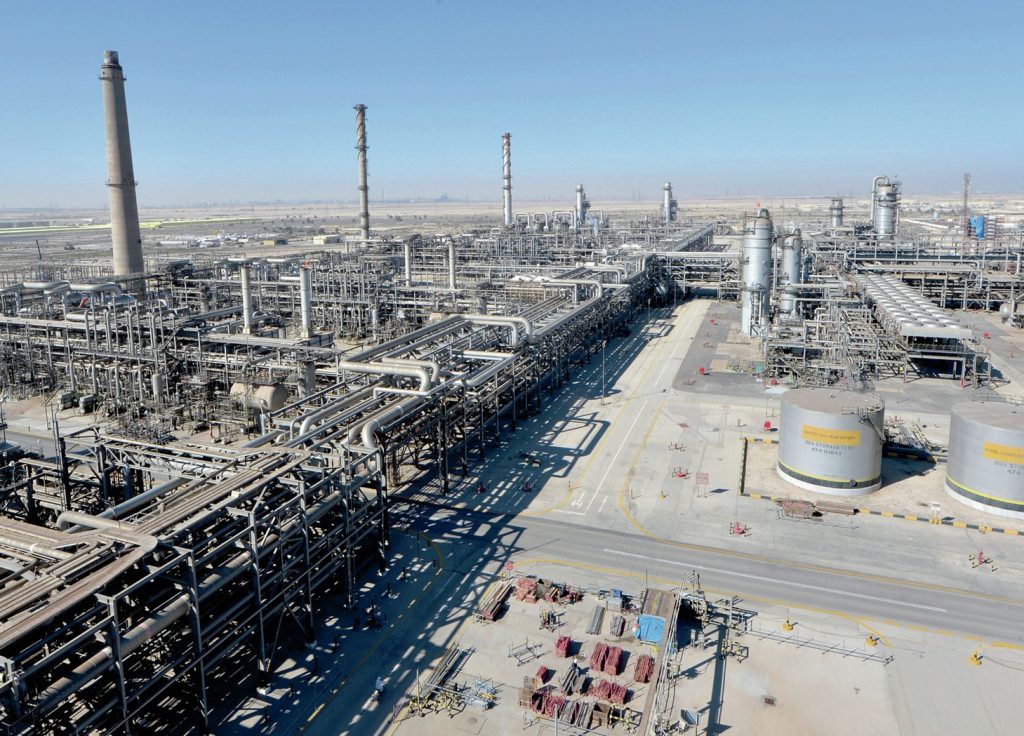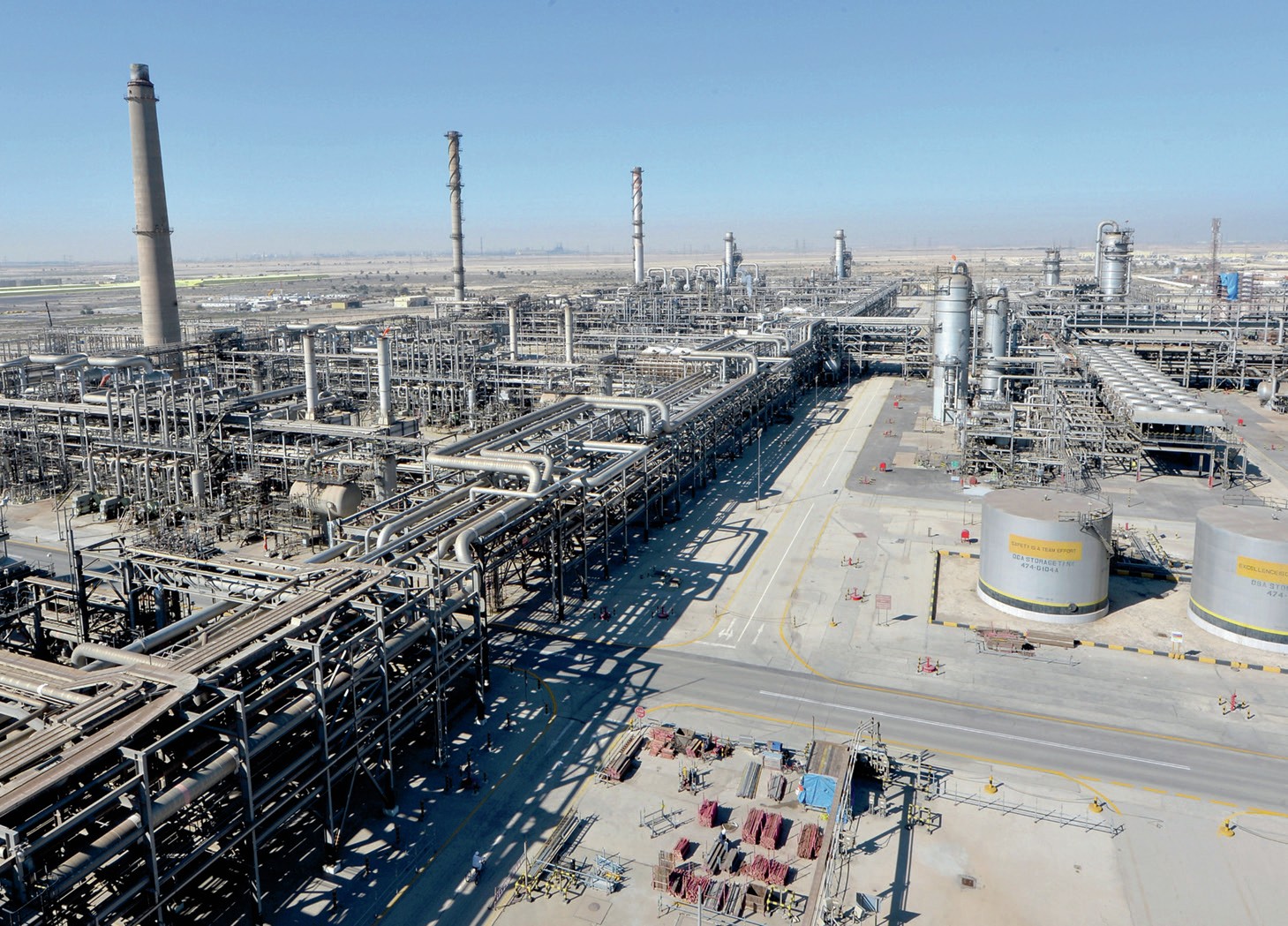Sulphur 391 Nov-Dec 2020

30 November 2020
SOGAT 2020
CONFERENCE REPORT
SOGAT 2020
Sulphur reports on this year’s Sour Oil and Gas Advanced Technology (SOGAT) conference, which was run as a virtual event at the end of September 2020.

This year’s coronavirus outbreak had pushed the date for the Sour Oil and Gas Advanced Technology (SOGAT) conference, organised by Dome Exhibitions, back from its usual spring slot to a date at the end of September and, when that time came around, also forced it to move from its usual home of Abu Dhabi to the internet, with speakers and delegates joining via conferencing software. Nevertheless, the standard of papers remained high, and there was keen interest from attendees.
Abu Dhabi has rapidly become the centre of the Gulf’s sulphur industry, and state oil and gas company ADNOC the world’s largest producer, courtesy of its sour gas assets such as Shah and Habshan. The conference began with several presentations which dealt with sulphur recovery unit (SRU) operations.
Oxygen enrichment
Mahin Rameshni of RATE Technologies gave a paper on the expansion of SRU capacities using oxygen enrichment. In the paper she presented a case study on a refinery revamp. The refinery has two existing SRU’s, each with a capacity of 75 t/d. It had recently added a new hydrotreater, amine and other units, and as a result needed to process significant volumes of amine acid gas and ammonia acid gas. Five options were considered and compared, including adding a new full or partial SRU, but the choice basically boiled down to adding oxygen enrichment to each train separately (Option 1) or via a common section (Option 2), or modifying the existing sour water stripper to become a two sage SWS to process all of the ammonia, with the ammonia either collected for sale or passed to an incinerator (Option 5). The cost comparison showed all three options were close, with 1 and 2 having the lower capital cost, but the customer was not keen on the ongoing operating cost of buying oxygen, and so option 5 was the one eventually chosen.
Maher Abdulatif of Saudi Aramco also considered oxygen enrichment in a recent engineering assessment for construction of a new green field gas processing facility in Saudi Arabia. The base case would have comprised eight air-based SRUs, three of them to be deployed in Phase 1 and a further five in Phase 2, which would triple the capacity of Phase 1, all using two Claus stages and a tail gas treatment unit, to achieve Aramco’s specification of 99.9% sulphur recovery. The specifications also called for a low turndown percentage (15%) to cope with a low feed ramp-up of operations. Two cases of oxygen enrichment were considered; using enrichment only in Phase 2 (bringing the total down to 3 SRUs in Phase 2), or using pre-investment allowing the Phase 1 SRUs to switch to oxygen enrichment in Phase 2, bringing the total SRUs down to two in Phase 2 or five in total. The latter led to a 20% reduction in capital expenditure and was the one finally chosen.
Ammonia destruction
Upstream units in a refinery can generate ammonia in fluid catalytic cracking or catalytic reforming, amongst many other processes, which passes into the sour water stripper and thence via the main reaction furnace to the SRU. This can place extra hydraulic load on the SRU, requiring a larger unit. Ammonia can also react with SO3 to form ammonium salts which can deactivate catalysts increase pressure drop. As an alternative to ammonia destruction at the furnace exit, Ruben Kranenburg of Duiker Combustion Engineers presented his company’s Stoichiometrically Controlled Oxidation (SCO) unit, which handles ammonia separately and uses the hot effluent from the ammonia section to heat the tail gas treatment unit. To avoid NOx formation, the first section is a reducing zone, with a sensor deciding on the air feed to the reducing zone to maximise ammonia destruction. The second stage uses excess oxygen at a moderate temperature to fully convert remaining ammonia with low NOx formation (<70 ppm).
Abijeet Raj of King Abdullah University in Abu Dhabi also covered ammonia destruction. It is a complex and little understood area, he said, so he had attempted to build a computer model of conditions in a reaction furnace and waste heat boiler. The model was then validated via real world test results from the Habshan V sulphur plant, and data from Canada on oxygen enrichment studies and reported data in the literature, and the modelled concentrations compared well with plant data. Once validated, ammonia destruction was investigated, including the effect of feed pre-heating temperature, furnace length/ residence time, oxygen enrichment etc.
Sulphur handling
Hani El Gheriani of Enersul considered the perennial problem of sulphur dust. Sulphur has a lower explosion limit of 35 g/m3 , and an auto-ignition temperature of 190°C, making it one of the most easily ignited substances in bulk handling. It can be set off by friction or static sparks, and detonations can raise more clouds of dust, leading to even larger, secondary explosions. As a result, handling systems need to be designed to minimise dust formation via several considerations, such as reducing the number of transfer points. Drop distances need to be as small as possible, and conveyor belts anti-static and fireproof and using brush wipers to clean them. Electrical insulation needs to have the appropriate hazardous area certification, and all metal components need to be properly earthed. Dust generation can never be eliminated, so dust control systems, using sprayed water, surfactant or foam, or dust collection systems, preferably using a wet scrubber, are also essential if sulphur dust is to be properly controlled. Hani also suggested minimising stockpile heights, as older formed sulphur becomes more friable and can be crushed by the weight of product on top of it.
Justin Tucker and Dan Campbell of CSI Ametek showcased their ‘total heating solutions’ for sulphur (or other fluid) pipeline temperature monitoring and steam tracing or jacketing. The approach uses a finite element analysis and computational fluid dynamic (CFD) modelling to determine and optimise what thermal coverage is needed for any given stretch of pipe in order to provide thermal process guarantees while minimising associated infrastructure such as manifolds and steam traps.
Safety and reliability
Ali Moncur of SMS discussed improving personnel safety during H2 S sampling operations using a closed loop real time inline H2 S analyser, together with a case study of its use during an onshore well test in the UAE. The system has some limitations in terms of range of H2 S concentrations and pressure, but eliminates more dangerous tube sampling methods.
Prasanth Sreekumar of Endress+Hauser spoke on improving the efficiency and safety of gas processing plants. Reliable gas flow measurement is necessary, especially where feed gas composition can vary. Too low a flow rate may lead to efficiency loss and inadequate absorption of acid gases, while high flow rates in a contactor can lead to amine foaming or carryover and reboiler overloading. The presence of water can lead to corrosion and formation of gas hydrates or lower heating values of the sales gas. Endress+Hauser supplies ultrasonic monitors which can work accurately under wet gas conditions. It also has spectroscopic sensors which can measure gas quality, including CO2 , trace H2 S levels, and oxygen levels.
Elmo Nasato of Nasato Consulting, in cooperation with Industrial Ceramics, looked at waste heat boiler (WHB) reliability. As WHBs have move to higher pressures it has meant that much greater focus must be paid to an understanding of water chemistry, especially for facilities that have a range of WHB operations. Ferrule issues can often be misdiagnosed as a problem with the ferrules themselves, with a rush to replace tube sheet linings or tubes, when they can be a symptom of a process or more likely a water side issue. A full root cause analysis (RCA) needs to be conducted as soon as possible in order to avoid chronic and more serious failures. Intermittent boiler blowdown needs to be a routine procedure, performed 2-3 times per day. He presented a case study where this was ignored, leading to two WHB failures in 10 months.
Tail gas treatment
Georgios Lithoxoos of Saudi Aramco described the development of an adsorption-based tail gas treatment process at Aramco’s gas processing plants. A typical SRU at an Aramco gas plant comprises two Claus reactors and a Superclaus reactor, with a tail gas treatment section, with sulphur recovery between 98.7-99.1%. However, the Saudi authorities moved to a 99.9+% recovery standard in 2014, necessitating an upgrade of the SRUs. Aramco looked at a temperature swing adsoprtionbased process described in the literature using a molecular sieve and modified zeolites to selectively remove H2 S from the tail gas of SRUs. However, the paper did not consider water presence in the gas, and proposed air as a regeneration gas, which would have created sulphur deposition in wet conditions. Aramco developed the process to include a quench tower and cooler to remove water from the gas stream, and tested various zeolites for their effectiveness. The process has since been demonstrated on a side stream from a gas plant SRU. Future planned developments include optimising the process design, including the temperature and flow rate of the regeneration gas.
SRU operations
Uday Parekh of Blasch Precision Ceramics spoke about how to achieve an optimised temperature profile in the SRU reaction furnace and thermal oxidiser. Smooth operation of an SRU reaction furnace is critical to trouble-free operation. And Uday said that three Ts determine how efficient combustion is – time, temperature and turbulence. Blasch has been progressively improving its hexwall and checkerwall designs, and now provides the VectorWall, which creates a turbulent flow downstream of the wall, improving mixing and residence time and leading to higher temperatures in the furnace, both in front and behind the wall, leading to more complete combustion, while maintaining an open face area that minimises the pressure drop. It also eliminates vibrations which can occur with conventional choke rings, and improves ammonia and BTX destruction.
Energy optimisation
In the final session, Sami al Mutairi of Saudi Aramco detailed an energy optimisation assessment case study, with simultaneous process and utility integration, to optimise project life cycle cost. The new facility involved the installation of additional units in an existing gas processing plant, in this case of a dew point control unit, de-ethaniser and condensate stripper in order to meet the required product specification. The assessment resulted in energy and capital savings as well as CO2 reductions and assuring that the facility was energy efficient while satisfying the intended objectives.
Saqib Sajjad of ADNOC Gas Processing presented a thermodynamic analysis of energy recovery from pressure reduction systems. He paper examined using a back pressure steam turbine in place of steam pressure reduction station to supply low pressure steam to regenerators, and explained its impact on the load on boilers supplying high pressure steam. He also analysed the impact of replacing an amine absorber level control valve with a hydraulic turbine, in a gas sweetening unit, on amine regeneration and overall energy consumption.
Next year’s SOGAT is provisionally scheduled to be held in Abu Dhabi between April 29th-31st 2021, but of course, that very much depends upon the course of the virus.






